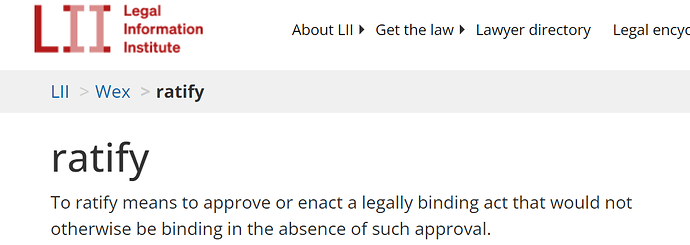| Name | Description |
|---|---|
| Proposal Title | ZKsync Token Program Priorities 2025 v1.0 |
| One Sentence Summary | This proposal ratifies the ZKsync Token Program Priorities for 2025, facilitating better impact and effectiveness for ZK token allocations by the Token Assembly. |
| Proposal Author | @rafa, on behalf of ZKsync Governance Team |
| Proposal Sponsor | @Polar |
| Date Created | 20-December-2024 |
| Version | 1.0 |
| Summary of Action | Ratify Document |
| Link to contracts | Not Applicable |
Purpose
The purpose of this proposal is to ratify the Token Assembly’s 2025 ZK token allocation priorities:
All ZK token allocations will prioritize bringing to reality ZKsync’s elastic network, an ever-expanding network of customizable chains. This includes three components: accelerating ZKsync protocol development, establishing the network of ZK Chains, and creating the home for Elastic Apps powered by ZKsync.
Abstract
Drawing on the insights shared by Alex Gluchowski on the ZKsync technical vision and roadmap, the ZKsync Governance Team proposes the Token Assembly adopt the ZKsync Token Program Priorities 2025. These priorities will help ensure the impactful and effective allocation of ZK tokens throughout the next year.
Motivation
Ensure impactful and effective allocations of ZK tokens in 2025, in alignment with the public ZKsync technical roadmap and values of the ZK Credo.
Specification
ZKsync Token Program Priorities 2025 v1.0
All ZK token allocations will prioritize bringing to reality ZKsync’s elastic network, an ever-expanding network of customizable chains. This includes three components: accelerating ZKsync protocol development, establishing the network of ZK Chains, and creating the home for Elastic Apps powered by ZKsync.*
1: Accelerate ZKsync Protocol Development
The vision of ZKsync requires a step-change advancement in protocol architecture. The protocol must have best-in-class security, developer experience, user experience, and interconnected public and private chains.
The Token Assembly should allocate ZK to accelerate ongoing research, development, and deployment. Specific technical components include EVM equivalence, decentralization, privacy, throughput scale, fee reduction, and interoperability.
2: Establish A Network of ZK Chains
ZK Chains are powered by ZKsync’s cryptographically-secured interop. As a network, they create a positive sum game: the more chains join, the higher the benefit for all other ZK Chains and their users. The Token Assembly should allocate ZK to accelerate and facilitate the adoption of ZK Chains by removing barriers to recruitment and activation. Furthermore, the Token Assembly should reward the pioneers powered by ZKsync, the initial elastic network that others expand.
3: Create the Home of Elastic Apps
ZKsync allows builders to create new Elastic Apps using unique offerings such as native account abstraction and interoperability. The Token Assembly should allocate ZK to reward the next generation of apps powered by ZKsync. Specifically, ZK allocations should accelerate the adoption of unique ZKsync features such as ZKsync SSO, interoperability, and privacy.
Rationale
This Governance Advisory Proposal (GAP) seeks to provide this context by presenting a prioritized set of ZK token allocation priorities for 2025, which, should they be ratified, will enable a clear and actionable path forward for the Token Assembly to evaluate Token Program Proposals.
The strategic priorities serve as a reference for the year to come. They can be updated or changed at any time to align with changing circumstances. They should not be considered a strict requirement for proposal approvals by the Token Assembly. Instead, the priorities serve as a cornerstone of ideation and evaluation by the Token Assembly, helping community members focus on what’s most important.
Revisions to these strategic priorities may be requested by another GAP and require the approval of the Token Assembly.
Why prioritize ZKsync protocol development?
ZKsync means technical excellence. The Token Assembly should reinforce this by supporting continuous research and development, pushing the boundary of what Ethereum protocols can do today. This improves ZKsync and maintains its offering at the cutting edge.
Protocol innovation goes hand-in-hand with protocol security. The ZKsync ecosystem has invested more than any other in security over the years, including by being a pioneer of protocol Security Councils. The Token Assembly should work on supporting this effort and incentivize strong security best principles to be applied.
These two focuses, development and security, are reflected in the first purpose of ZKsync governance: to secure, support, and improve the protocol. As a result, the strategic priorities begin with ZKsync Protocol Development. This includes foundational components such as EVM equivalence, Stage 1 Decentralization, throughput scale, fee reductions, and seamless interoperability. Once these pieces are in place, the Token Assembly can more easily and effectively grow ZKsync through new chains and apps.
Why prioritize a network of ZK Chains?
ZKsync interoperability built with zero-knowledge proofs is the best way to achieve horizontal scalability, offer seamless UX to users, and share liquidity across ZK Chains. It allows the ecosystem to feel like a single chain while enabling scale and customizability.
Yet the benefits of interoperability rely on a sizable network. The more chains that join, the more users can be reached through all the connected ZK Chains; the more tools and apps deploy on these ZK Chains, the more utility users will have regardless of which chain they join. The Token Assembly must help remove current barriers to launch, such as high infrastructure costs, and reward ZK Chain first-movers.
Why prioritize Elastic Apps?
While the ZKsync protocol development and establishing a network of ZK Chains are a key priority as they form the foundation for apps, fostering an environment that promotes usage and experimentation with ZKsync’s interoperability, native account abstraction, and other unique features is essential for the ecosystem’s short and long-term growth. The Token Assembly should focus on attracting, supporting, and helping apps that unlock the unique power of ZKsync.
Implementation Plan
Upon proposal approval, priorities will be used as guide for Token Program Proposal evaluation and added as a reference in relevant governance documentation.
